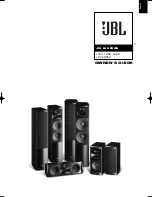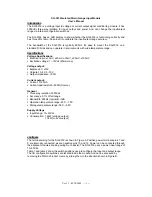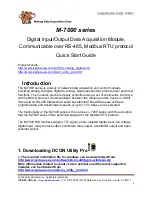
16
Valve Camshaft
The front end of the camshaft has an indicator cup. The cup has
slots in the outer edge and cycle numbers on the inside face
(Figure 17).
The numbers can be seen with the cover off, from the front over
the top of the controller. The number at the top indicates which
regeneration cycle is currently in progress.
Figure 17
The corresponding slot for the number is positioned at the optical
sensor which is approximately 90 degrees out of phase.
Regeneration Cycle Indicators
0 = Treated Water - normal operation mode
1 = Backwash Cycle
2 = Regenerant Draw Cycle
3 = Slow Rinse Cycle
4 = System Pause
5 = Fast Rinse Cycle 1
6 = Backwash Cycle 2
7 = Fast Rinse Cycle 2
8 = Regenerant Refill
Note:
If electrical power is not available, the camshaft can be
rotated counterclockwise by hand if the motor
is removed.
Valve Operation
2 Bypass Valve
4 Outlet Valve
6 Rinse Drain
1 Regenerant Valve
3 Inlet Valve
5 Refill Valve
7 Backwash
Drain Valves
Figure 18 Valve
Disinfection of Water Conditioning Systems
The materials of construction in the modern water conditioning
system will not support bacterial growth, nor will these materials
contaminate a water supply. During normal use, a conditioner may
become fouled with organic matter, or in some cases with bacteria
from the water supply. This may result in an off-taste or odor in
the water.
Some conditioners may need to be disinfected after installation
and some conditioners will require periodic disinfection during
their normal life.
Depending upon the conditions of use, the style of conditioner, the
type of ion exchanger, and the disinfectant available, a choice can
be made among the following methods.
Sodium or Calcium Hypochlorite
These materials are satisfactory for use with polystyrene resins,
synthetic gel zeolite, and bentonites.
5.25% Sodium Hypochlorite
These solutions are available under trade names such as Clorox*.
If stronger solutions are used, such as those sold for commercial
laundries, adjust the dosage accordingly.
1. Dosage
• Polystyrene resin; 1.2 fluid ounce (35.5 mL) per cubic
foot.
• Non-resinous exchangers; 0.8 fluid ounce
(23.7 mL) per cubic foot.
2. Regenerant tank conditioners
A. Backwash the conditioner and add the required
amount of hypochlorite solution to the well of the
regenerant tank. The regenerant tank should have
water in it to permit the solution to be carried into the
conditioner.
B. Proceed with the normal regeneration.
Treated Water Indicator
(normal operation)
Treated Water Slot
Summary of Contents for Origins WC300
Page 1: ...Operation Manual 00947 1821 EA 03671...
Page 33: ...Manuel d utilisation 00947 1821 EA 03671 A D O U C I S S E U R D E AU WC300...
Page 66: ...66...
Page 67: ...67...
















































